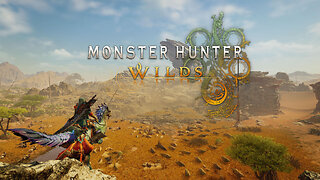Premium Only Content

Moon up close
The moon, when observed up close, reveals a stunning and intricate landscape that is often not visible from a distance. Astronauts who have been fortunate enough to visit the moon describe its surface as a desolate yet captivating expanse.From a closer vantage point, the moon's surface is covered in a layer of fine, powdery dust known as regolith. This regolith is the result of countless impacts by asteroids and meteoroids over billions of years. It gives the moon a unique texture, resembling a mixture of fine sand and gravel.
One of the most prominent features when viewing the moon up close is its craters. These impact scars come in various sizes, from small pockmarks to massive basins. Over time, some of these craters have been filled with lava, creating dark, flat regions known as maria. These maria contrast with the brighter highland regions, creating a distinct pattern on the moon's surface.
As you explore the moon's surface, you would notice that it lacks any significant atmosphere. This means there's no air to scatter sunlight, resulting in a pitch-black sky even during the daytime.
-
 LIVE
LIVE
SpartakusLIVE
1 hour ago#1 Action HERO ends your weekend in a FIERY BLAZE of non-stop GLORY
479 watching -
 54:47
54:47
Sarah Westall
3 hours agoTranshumanism vs Natural Human Zones, AI consciousness and the Hive Mind Future w/ Joe Allen
6.98K5 -
 LIVE
LIVE
The Sufari Hub
1 hour ago🔴ELDEN RING MODDED - ROAD TO #1 GAMER ON RUMBLE - #RumbleGaming
39 watching -
![[LIVE] The Sunday Surprise! | Counter Strike w/ Omega (Meisters Madness)](https://1a-1791.com/video/fww1/70/s8/1/U/P/W/x/UPWxy.0kob-small-LIVE-The-Sunday-Surprise-A-.jpg) LIVE
LIVE
Joke65
1 hour ago[LIVE] The Sunday Surprise! | Counter Strike w/ Omega (Meisters Madness)
15 watching -
 LIVE
LIVE
MaverickLIVE
1 hour agoFirst Rumble Stream!
73 watching -
 LIVE
LIVE
xTimsanityx
5 hours ago🟢LIVE: COACH ALWAYS TOLD ME, "SHOOTERS SHOOT" | GOONING ON E-DISTRICT
43 watching -
 32:19
32:19
SB Mowing
2 days agoThis yard was putting KIDS IN DANGER - Now they can SAFELY play outside again
7.91K16 -
 LIVE
LIVE
Lofi Girl
2 years agolofi hip hop radio 📚 - beats to relax/study to
710 watching -
 47:41
47:41
Tactical Advisor
4 hours agoMake Your AR15 into a Bullpup/New Thermals | Vault Room Live Stream 018
28.1K11 -
 18:07
18:07
Bearing
12 hours agoThe INSANE MENTAL DECLINE of the Democrats 💥 Lefties are NOT Ok
42.9K113